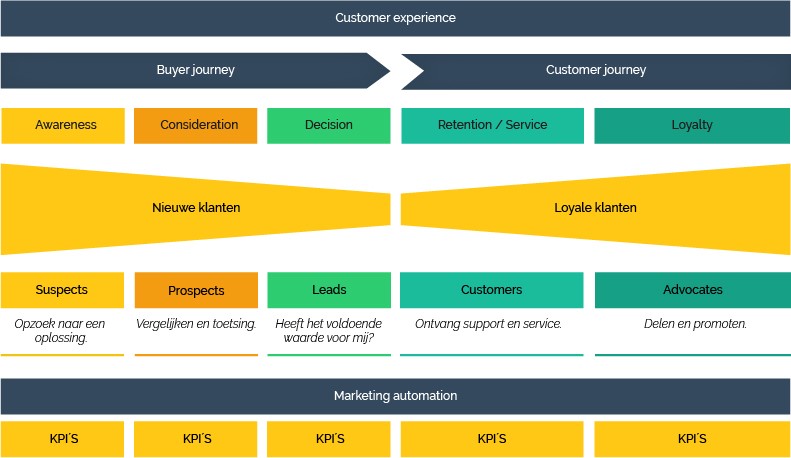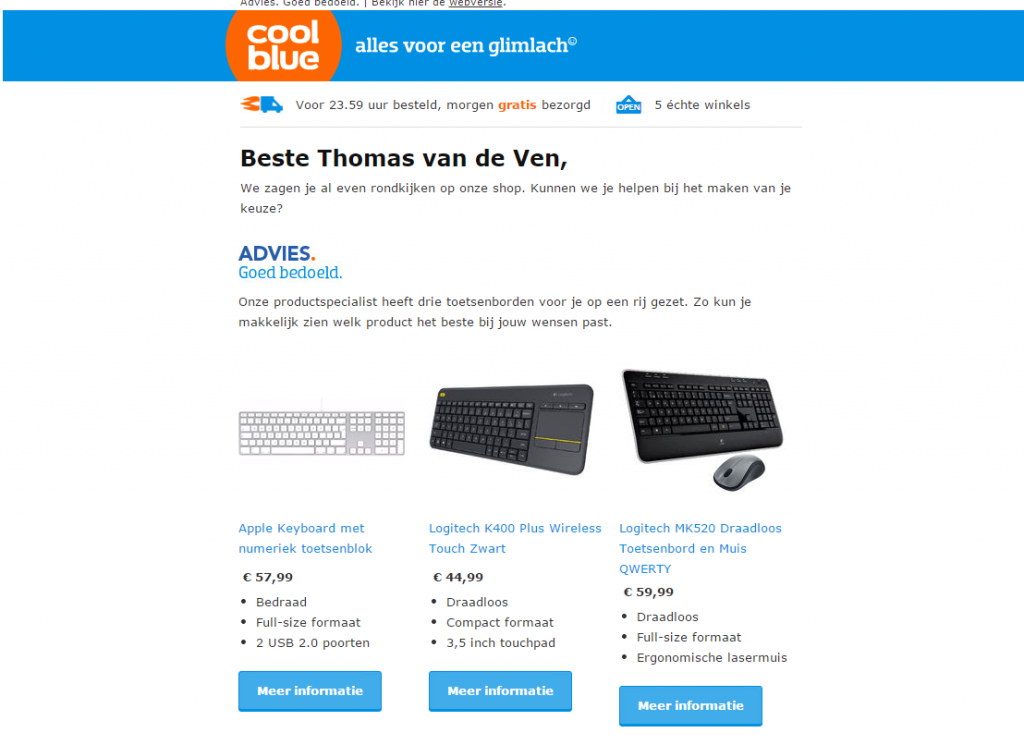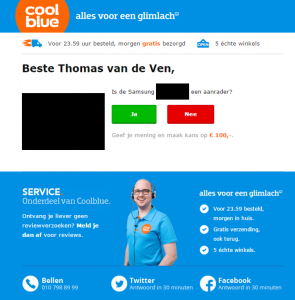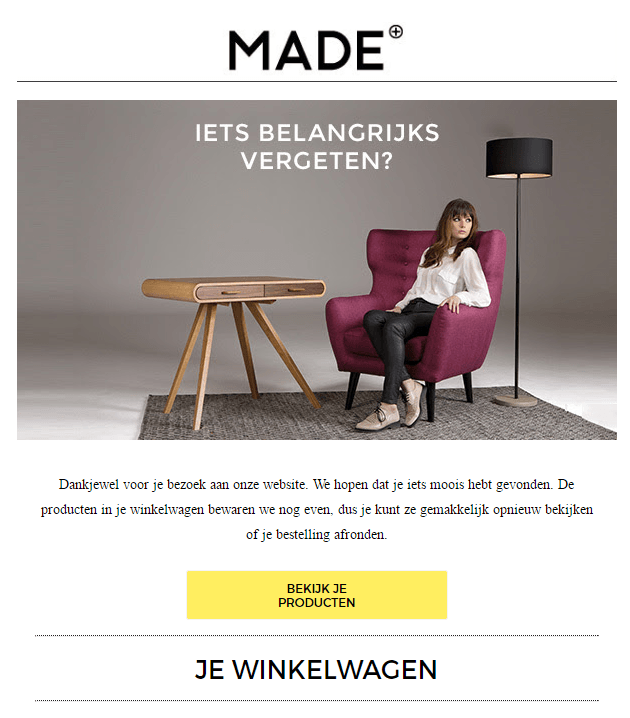What is marketing automation?
Marketing automation is therefore not a product, but a complex process that can be thought out and designed in detail for the buyer journey and customer journey.
Marketing automation can be used in every part of the customer experience, the effectiveness of each phase is measured based on specific KPIs.

In this article I will tell you more about the following topics:
Is marketing automation suitable for everyone?
The short answer is: Yes, now it is.
Why?
Previously, it was thought that marketing automation was only accessible to large companies or companies with huge budgets. This idea is outdated.
Although the use of marketing automation started with these types of large companies, the technology has now become more advanced. Marketing automation is now also accessible and affordable for SMEs.
Bovendien zorgt de schaalbaarheid van marketing automation ervoor dat je als bedrijf klein kan beginnen, en dit later oneindig ver op kan schalen.
Examples of marketing automation
To make this term/service a little more tangible, I will give a number of examples of how companies effectively use marketing automation.
Product comparisons
I recently looked around the Coolblue webshop to purchase a keyboard for a Macbook. I hadn’t made a decision yet, but I had my eye on an Apple keyboard with numeric keypad.
Without having added this to the shopping cart, Coolblue’s technology picked up my interest. Shortly after leaving the webshop I received the following email:

Coolblue picked up which products I was viewing, added that data to my ‘data profile’ and then sent me a personalized email containing exactly the items I was viewing.
Well done Coolblue!
And yes, I ended up buying the Apple keyboard 😉
Product Reviews
Another example of excellent use of marketing automation by Cooblue: requesting product reviews.
Buy a television at Coolblue and within a few days they will send you an automated email like the one below.

Once again, the content in the email is personalized, they start with my first name and specifically ask about the Samsung television that I recently purchased.
An extra incentive to provide feedback makes it very attractive to give my opinion. After all, it is a small effort that gives me a chance to win €100.
Abandoned shopping cart
You may be familiar with these types of emails. You looked at an online store, added some products to your shopping cart, but ultimately decided not to order them.
A little later you will find an email in your inbox asking you to complete your order. These are‘Abandoned shopping carts’.
According to a research from England 67.45% of all online shopping carts are abandoned without completing the order.
In other words, for every 100 potential customers, 67 will leave your webshop without paying. How much would your turnover increase if you could still reach these visitors?
There is of course a huge opportunity. An opportunity that Made.com, a webshop for designer furniture, has seized with both hands. Below you can see how Made.com uses the abandoned shopping carts:

If you have filled the shopping cart with products, but have not completed the order, you will receive this email with a reminder a day later. They have saved your products and will send you a direct link to complete. What a service!
Sales process
In addition to automations for web shops, it is also possible to automate contact moments or a request for a lead, for example.
In the case of Monkeybridge, we can ensure that all requests received in the ‘strategy and management’ category are referred to consultant x, while all requests from the ‘services’ category are referred to consultant y.
Is marketing automation a hype?
It will not be the first time that a new online marketing term first revives, and then quietly fades into the background.
It has now become clear: marketing automation is not a hype, but a proven technology. Why?
Simply put: because it is accessible, scalable and insightful and perhaps most importantly…. Marketing automation actually creates more turnover.
The right use of marketing automation enables you to grow your business turnover by 10 to 30 percent by increasing the number of high-quality leads by up to 50%. In addition, you save an average of 23 percent on the time that sales and account managers spend on bringing in a lead.
Why is marketing automation so popular?
There are a number of factors that make marketing automation such a huge success, namely:
- It saves time and money
- It allows you to time your communication perfectly
- It allows you to approach customers personally
- In combination with neuromarketing it is worth gold
- The combination with an inbound marketing strategy
- It promotes lead generation
Automation saves time and money
Let’s state the obvious: By automating employee actions, marketing automation saves you time and therefore money. Although the automation will take time to devise and optimize, the technology will pay for itself by saving a lot of time later.
Timing
To receive a product review or offer to upsell products, timing is crucial. The customer must have had time to receive and use the product, but your webshop must still be top-of-mind.
This timing can be automated, so that these contact moments are always carried out at the right time or after the desired period.
This timing is important everywhere in the customer experience. Once you are able to apply the correct timing, it is important to send the right information to the customer.
Personal approach
Marketing automation starts with collecting customer data.
When this information has been collected in a database using web analytics, segments and/or scores can be created.
Is someone a prospect, lead or customer? Which customers are interested in what? Which visitors have registered for the newsletter? Which customer left a shopping cart?
These are questions that you can answer later – and even better, where the correct information is automatically sent.
Because all this customer data is available in your database, you are able to address a customer personally.
Why is a personal approach important?
Research has shown that a personal email is opened much more often, is read better and significantly increases the chance of conversion.
![]()

Marketing automation and neuromarketing: a golden combination
When you combine marketing automation with neuromarketing, and you make maximum use of the unconscious brain of the consumer, the package is complete.
You influence customers and visitors with subtle hints in text, color, placement and design to take the action you want. This action is of course different per phase in the customer journey – can be deduced from the collected customer data.
And all this completely automated!
With this combination you have created a well-oiled machine that will automatically ensure that leads flow in, customers complete their orders and company turnover is increased.
Combination with an inbound marketing strategy
In addition to the combination with neuromarketing, marketing automation can easily be combined with other online marketing techniques. As an example of an effective combination, I mention the inbound marketing strategy.
Thanks to the combination with inbound marketing, you show the right content, at the right time. What do you automate here?
- storing data based on views and clicks;
- assigning a phase;
- determining the right moment;
- determining which content is correct.
This combination promotes engagement with the website, the number of conversions, the authority of your website and thus also influences the SEO score.
Marketing automation promotes lead generation
Whatever way marketing automation is used, it promotes lead generation in almost all forms. This is because it takes over tasks from employees, allowing them to spend their time more effectively and because information about your target group is automatically collected.
In addition, when using this marketing technique, nothing happens based on chance or ‘a good feeling’. Everything is driven by data.

